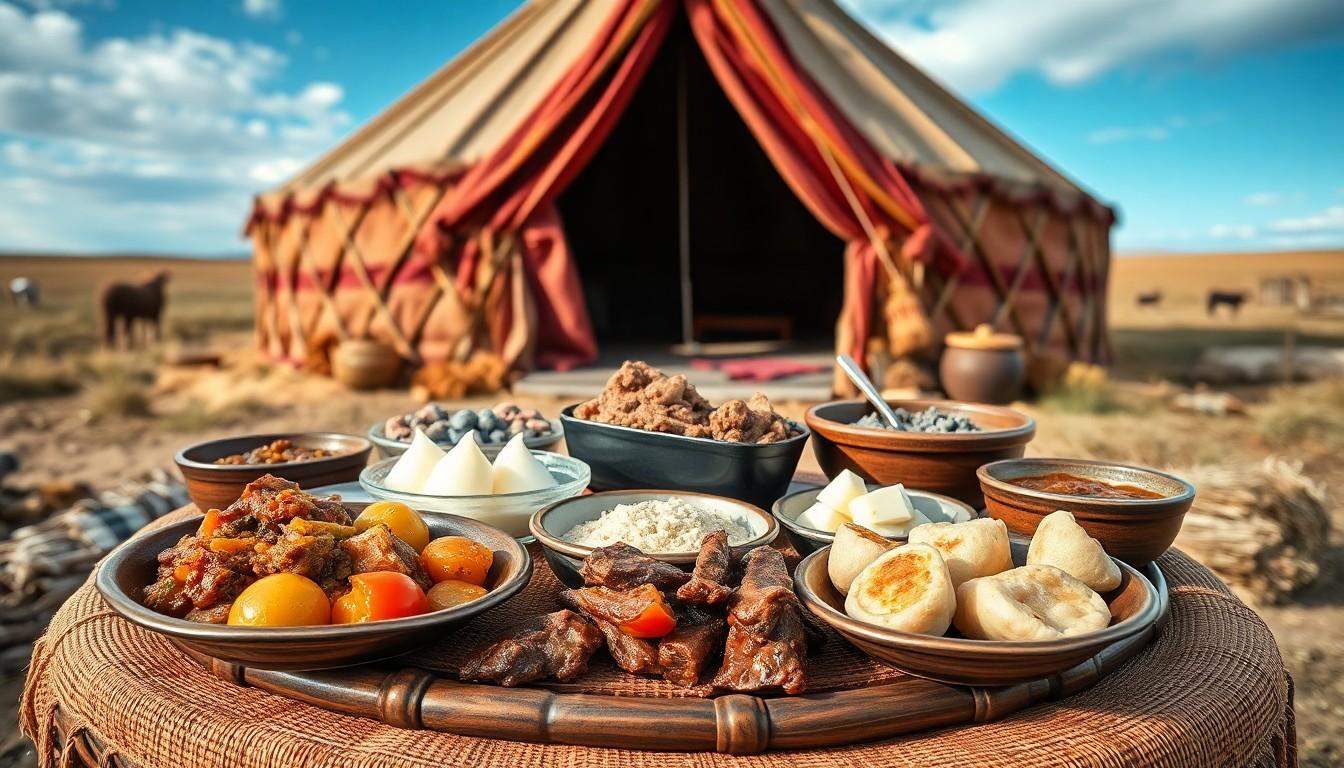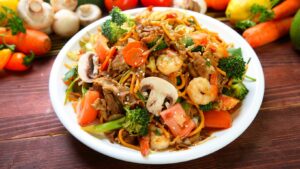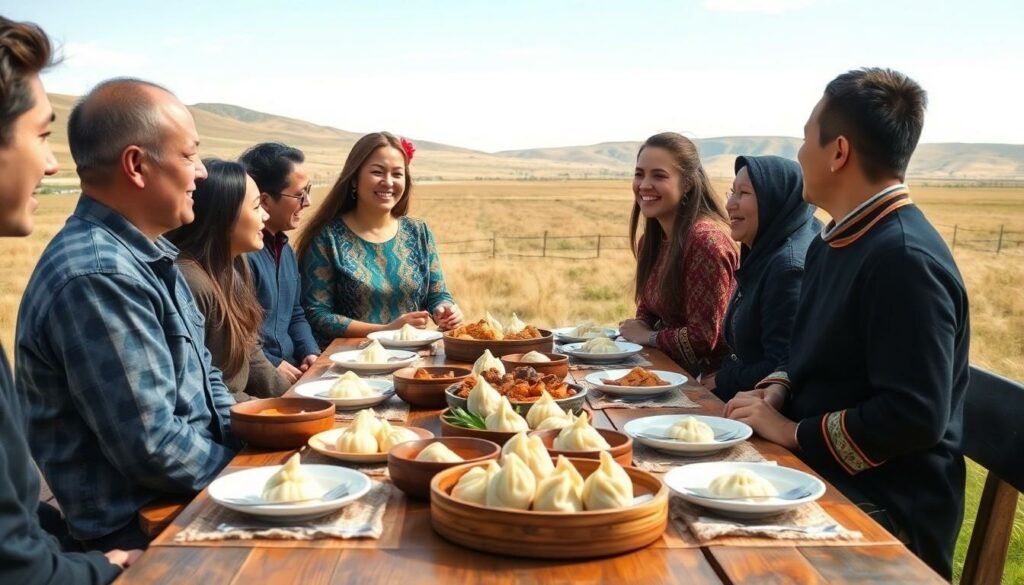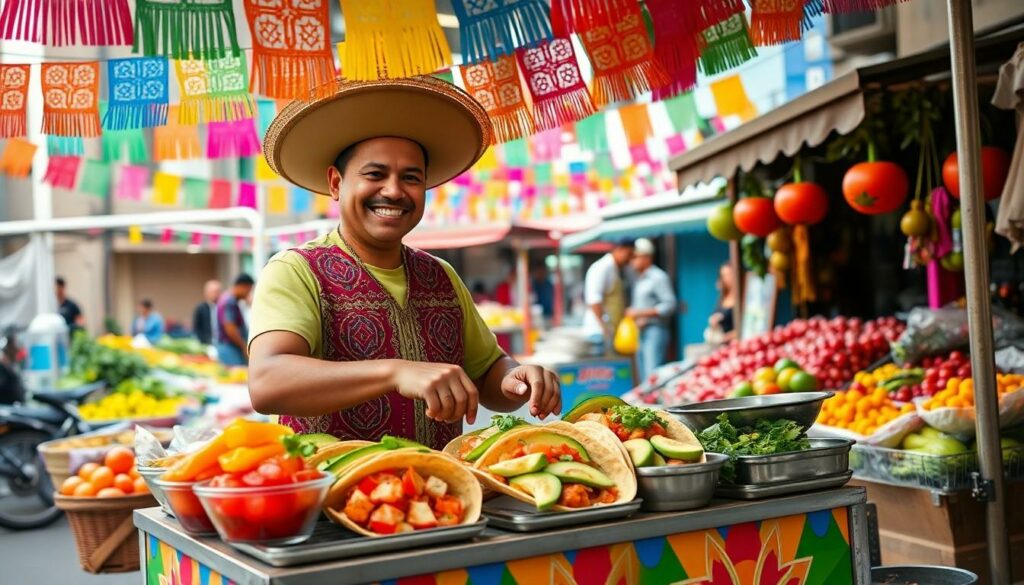Mongolian food culture is a feast for the senses and a delightful adventure waiting to be explored. Imagine hearty dishes that can withstand the harshest winters, all while tantalizing taste buds. It’s a culinary journey where every bite tells a story of nomadic traditions and the vast steppes of Mongolia. From savory mutton dumplings to rich milk tea, the flavors reflect a lifestyle steeped in history and resilience. And let’s not forget the infamous fermented mare’s milk—definitely an acquired taste! Whether you’re a culinary daredevil or just curious about new cuisines, Mongolian food culture offers something for everyone. So grab your chopsticks (or your hands, no judgment here) and get ready to dive into a world where food is more than just sustenance; it’s a celebration of life.
Mongolian Food Culture
Mongolian food culture showcases a deep connection to the country’s nomadic traditions and harsh climatic conditions. Hearty dishes dominate the cuisine, with an emphasis on ingredients that provide energy and sustenance. Mutton, beef, and camel meat serve as staples, reflecting the pastoral lifestyle of the Mongolian people. Savory mutton dumplings, known as buuz, highlight the culinary skills passed down through generations. Each dumpling features a filling of minced meat seasoned with garlic and onion, and they often appear during festivals and family gatherings. Milk tea holds a special place in daily life, served with a touch of salt or butter. This beverage not only warms during cold months but also symbolizes hospitality. Fermented mare’s milk, called airag, presents a unique aspect of Mongolian cuisine. Enjoyed by many, this traditional drink is often offered to guests. Its slightly sour taste invigorates adventurous palates and serves as a testament to Mongolia’s rich dairy culture.
Vegetables and grains play a lesser role in the diet but are increasingly welcomed into the cuisine. Potatoes, carrots, and wheat products contribute to balanced meals and diversify traditional offerings. Festivals often feature elaborate dishes that showcase cultural heritage, with specific foods prepared to honor auspicious occasions.
Unique flavors characterize Mongolian cuisine, where the simplicity of traditional recipes reveals the beauty of natural ingredients. This culinary landscape invites exploration and appreciation of Mongolia’s cultural identity. Each dish carries a story, strengthening bonds among families and communities.
Fermented mare’s milk, called airag, presents a unique aspect of Mongolian cuisine. Enjoyed by many, this traditional drink is often offered to guests. Its slightly sour taste invigorates adventurous palates and serves as a testament to Mongolia’s rich dairy culture.
Vegetables and grains play a lesser role in the diet but are increasingly welcomed into the cuisine. Potatoes, carrots, and wheat products contribute to balanced meals and diversify traditional offerings. Festivals often feature elaborate dishes that showcase cultural heritage, with specific foods prepared to honor auspicious occasions.
Unique flavors characterize Mongolian cuisine, where the simplicity of traditional recipes reveals the beauty of natural ingredients. This culinary landscape invites exploration and appreciation of Mongolia’s cultural identity. Each dish carries a story, strengthening bonds among families and communities.
Traditional Ingredients
Mongolian cuisine relies heavily on traditional ingredients that reflect its nomadic culture and harsh climate. Meat and dairy stand out as staples, providing sustenance and energy.Meat and Dairy
Mutton serves as the cornerstone of Mongolian diets, often cooked in various methods, including steaming and roasting. Beef complements mutton, while camel meat adds diversity to the protein choices available. Dairy products hold significant importance, with milk serving as a primary ingredient in many dishes. Fermented mare’s milk, known as airag, represents a unique aspect of the dairy culture. It aids in hydration and digestion. Curd, yogurt, and butter round out the dairy offerings, forming essential parts of meals and snacks.Grains and Vegetables
Grains play a modest role in Mongolian cuisine, with barley and flour forming the base for traditional breads and dumplings. Dumplings like buuz exemplify the culinary creativity displayed in Mongolian households. Vegetables, though less prevalent, include root varieties such as potatoes and carrots, which provide essential nutrients. Recent dietary shifts incorporate more vegetables, fostering a balanced diet. Seasonal herbs, such as wild garlic and onions, complement meat and dairy dishes, enriching flavors and adding nutritional value.Popular Mongolian Dishes
Mongolian cuisine features a variety of traditional dishes that embody the culture’s history and nomadic lifestyle. Hearty and filling, these dishes showcase unique flavors and preparation methods.Buuz and Khuushuur
Buuz, steamed dumplings filled with seasoned minced meat, remain a favorite across Mongolia. Often enjoyed during festivals, these dumplings symbolize hospitality and cultural pride. Khuushuur differs slightly, being a deep-fried version that offers a crunchy exterior. Both dishes frequently use mutton, but variations with beef also exist. The preparation involves hand-folding the dough, a skill passed down through generations. Many families relish crafting buuz and khuushuur together, making it a cherished tradition.Khorkhog and Bansh
Khorkhog provides a unique cooking method that involves using hot stones and meat. This dish, often prepared with mutton, delivers a smoky flavor that enhances the experience. Bansh, on the other hand, represents small dumplings filled with meat, cooked in a steaming broth. The combination of these dishes showcases the importance of communal meals in Mongolian culture. Traditionally, khorkhog is served at gatherings, highlighting its role in fostering connections. Each serving of bansh offers a warm and comforting taste, embodying the heartiness of Mongolian fare.Dining Etiquette in Mongolia
Mongolian dining etiquette reflects the culture’s values of hospitality and respect. The structure of meals and practices surrounding serving and sharing play a crucial role in the dining experience.Meal Structure and Timing
Meals in Mongolia typically consist of three main parts: soup, main dish, and dessert. Breakfast often features dairy products like yogurt or milk tea, providing essential nutrients. Lunch, the largest meal, includes hearty dishes such as buuz or khuushuur. Dinner may be lighter, often consisting of leftover dishes from lunch. Timing can vary, with meal schedules influenced by seasonal changes and nomadic lifestyle. Eating together strengthens family bonds, making the timing of meals significant in Mongolian culture.Serving and Sharing Practices
Serving food in Mongolia follows a unique tradition. Hosts offer food first to guests before serving themselves, highlighting hospitality. Using the right hand for serving and passing food is customary, as the left hand is considered impolite. Sharing plays a vital role, reflecting generosity and community spirit. Dishes are placed in the center, allowing everyone to partake. It’s common to see guests encouraged to try various dishes, an invitation to savor the culinary offerings. Appreciation for food emerges through compliments and gratitude expressed towards the host.Influence of Nomadic Lifestyle
Mongolia’s nomadic lifestyle shapes its food culture profoundly. This lifestyle demands a diet rich in protein and calories to sustain energy during harsh conditions. Mutton, a primary meat source, anchors many traditional dishes. Steaming and roasting are favored cooking methods, preserving flavor while maximizing nutrition. Dairy products play a vital role in meals. Curd, yogurt, and butter are commonplace, providing essential nutrients. Fermented mare’s milk, known as airag, aids hydration and digestion, reinforcing cultural practices surrounding food. Such offerings illustrate the resilience embedded in nomadic traditions. Grains and vegetables, though limited, are essential for meal diversity. Barley and wheat contribute to the preparation of breads and dumplings, enriching the culinary landscape. Potatoes and carrots often appear in dishes, reflecting a gradual integration of agriculture into the nomadic way of life. Seasonal herbs and plants enhance flavors, demonstrating a deep connection with the environment.
Festivals and gatherings showcase elaborate dishes that signify cultural heritage. Each dish tells a story, connecting families and communities. Ingredients used in preparations are often locally sourced, reinforcing the importance of natural resources.
Dining etiquette embodies the values of Mongolian culture. Meals consist of a structured format, typically featuring soup, a main dish, and dessert. Guests receive priority when serving, demonstrating hospitality and respect. Utilizing the right hand for serving maintains the customs guiding food-sharing practices.
Communal meals strengthen familial bonds, making dining a shared experience. Each dish contributes to a deeper appreciation for Mongolian cooking traditions, where food represents more than sustenance; it reflects a way of life shaped by the nomadic environment.
Grains and vegetables, though limited, are essential for meal diversity. Barley and wheat contribute to the preparation of breads and dumplings, enriching the culinary landscape. Potatoes and carrots often appear in dishes, reflecting a gradual integration of agriculture into the nomadic way of life. Seasonal herbs and plants enhance flavors, demonstrating a deep connection with the environment.
Festivals and gatherings showcase elaborate dishes that signify cultural heritage. Each dish tells a story, connecting families and communities. Ingredients used in preparations are often locally sourced, reinforcing the importance of natural resources.
Dining etiquette embodies the values of Mongolian culture. Meals consist of a structured format, typically featuring soup, a main dish, and dessert. Guests receive priority when serving, demonstrating hospitality and respect. Utilizing the right hand for serving maintains the customs guiding food-sharing practices.
Communal meals strengthen familial bonds, making dining a shared experience. Each dish contributes to a deeper appreciation for Mongolian cooking traditions, where food represents more than sustenance; it reflects a way of life shaped by the nomadic environment.


